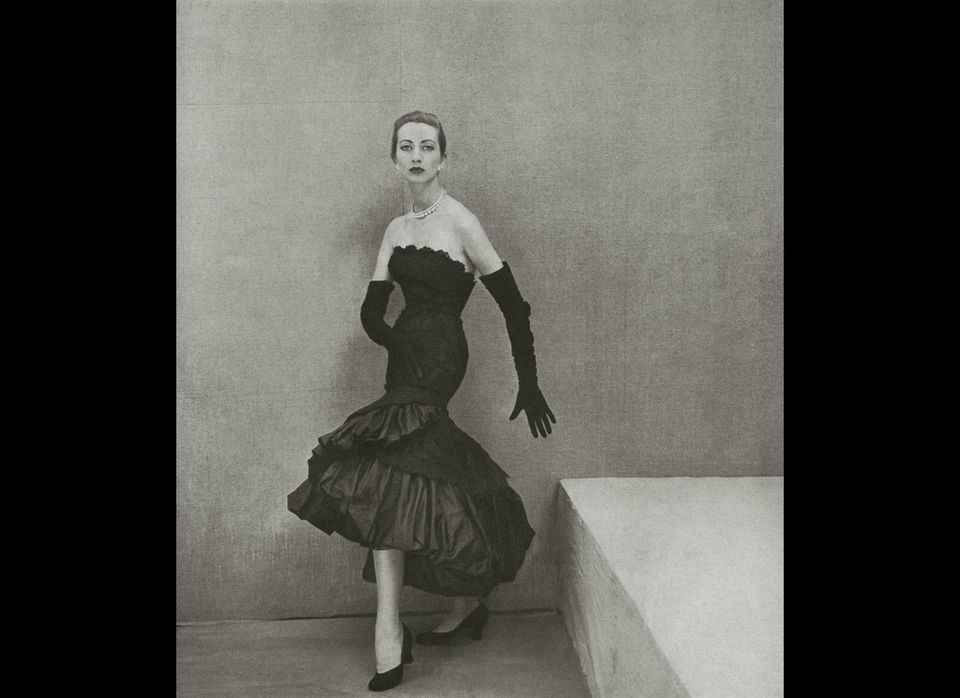You ascend to the first floor of the Spanish Institute and enter a hushed, carpeted salon, the pale gray of the walls and an even paler wainscoting a serene respite from worrying about tax cuts extensions, transporting you from the wind chill of a blustery December day on Park Avenue to a showroom on the Avenue Georges V in Paris in summertime 1967. On a screen elegantly inset into one wall, you see ladies in sleeveless dresses seated very much like yourself in bamboo-backed chairs at a couture showing of the Spanish tour-de-fashion Cristobal Balenciaga.
Even in grainy black and white film you can see the modish, contemporary line of every dress, the double wrapped buttery leather belts, the Dolman and raglan sleeves, the pillbox and feathered hats atop an extremely diverse set of showroom models. Gone are the wasp waists and Grace Kelly lines of the Dior New Look and welcome are the Audrey Hepburn sheaths and oversized chapeaux. The clients in the film are mostly silent and unsmiling, occasionally lighting up or even chewing gum. One dowager listing precariously into her neighbor wears sunglasses throughout the show, eying, inexplicably, the same # 38 model as a young girl seated in the last row, surely a daughter whisked away after school just in time by her fashionable mother.
"I don't like that" said one bien habille lady behind me as a model came out in a printed shift. It was as if we could still write down the numbers we preferred and hand them to a vendeuse waiting patiently at the rear. The # 4 turban. The # 160 dress and coat ensemble. The feathered cloche or semi-precious collier that both look utterly contemporary.
A few years ago, a much larger, more comprehensive Balenciaga show was at the Musee des Beaux Arts in Paris. I went with a friend, I noticing the perfection of the sashes and swags, she busily trying to sketch them for me so I could figure out how to have them copied.
And as copies go, Hamish Bowles has done an excellent version which has its own smaller charms and spry wall labels in addition to said second floor salon which perfectly evokes the era. In the ground floor and basement galleries, the angular flamenco dresses made me want to launch immediately into the Sevillana dances that I have been practicing so ardently.
Balenciaga's designs straddled France and Spain like the Basque country from which he sprang, combining ethnic toredor, gitane and religious images with those of the fashionable Faubourg. Yet this 1967 show is almost his swan song as he stopped working in 1969, a year after the student riots in Paris. Everything was changing in France, just as it was in the US, and couture was having a rough go of it, hardly on the radar of younger women who were sporting placards instead of poufs. Balenciaga was tired.
I'm often sorry I missed this era of hand-worked fashion though I could never have afforded real Balenciagas. I was once lucky enough to spy a very good clone at the bottom of a cardboard box at the Santa Monica airport flea market, a camel cashmere triangular coat with oversized tortoise buttons that makes my back straighten and my neck longer just by putting it on.
It strongly resembles number 131 from the 1967 collection -- and cost 25 dollars.
The exhibition at the Spanish Institute is at 68th and Park, open until February 19th.
